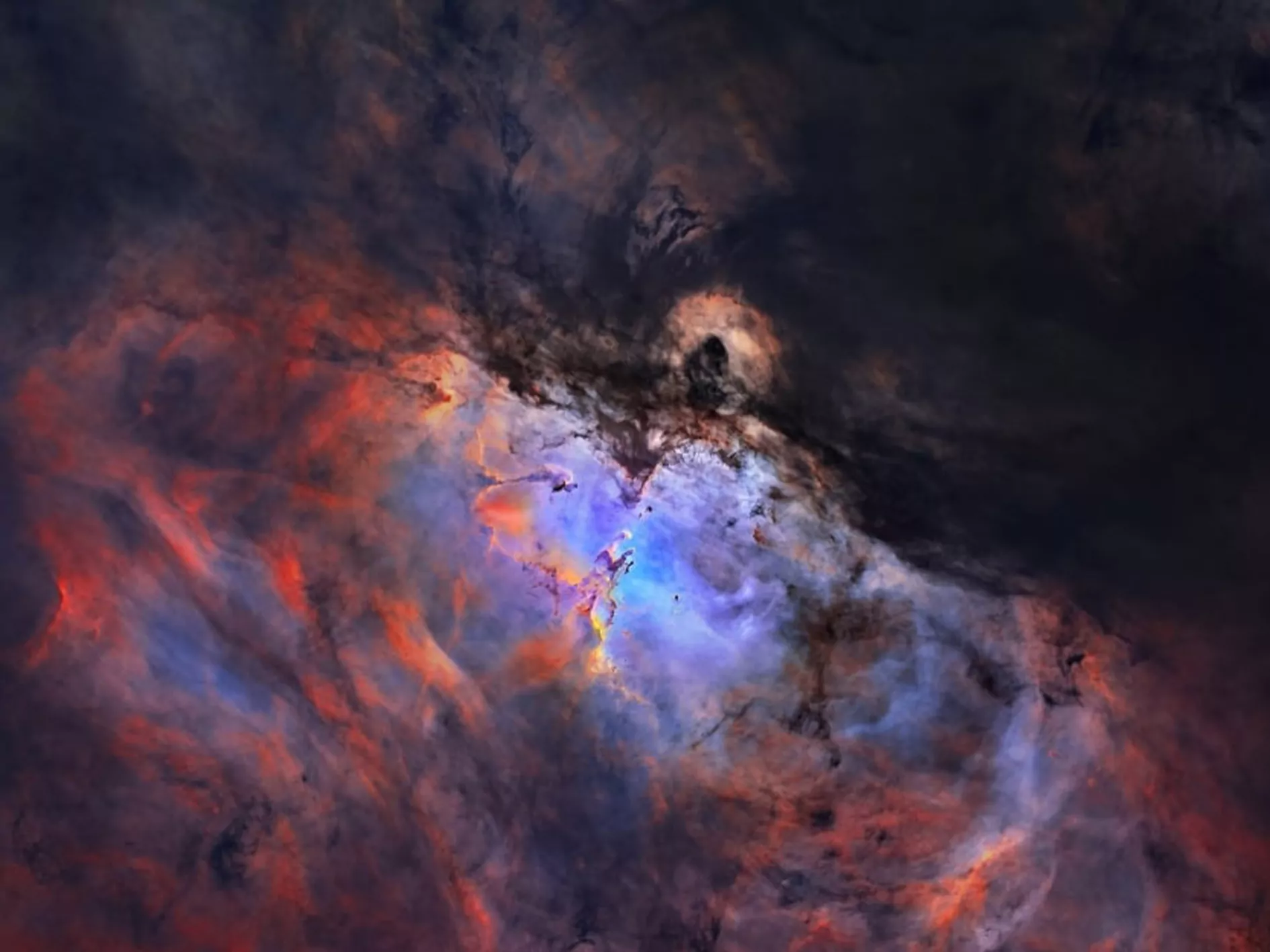James Webb photographed the Pillars of Creation
Thanks to its technical capabilities, the James Webb telescope has the ability to penetrate the dust curtain and capture previously unseen details of the internal structure of nebulae and regions of active star formation. No wonder NASA used it to shoot the Pillars of Creation.
The JWST image was obtained in the near infrared range. A number of newly formed stars can be seen on it, which can be identified by their characteristic bright red color. When clumps of matter with sufficient mass form inside gas-dust clusters, they begin to shrink under the influence of their own gravity, slowly heat up and eventually form new luminaries.
It is worth noting that despite the fact that infrared vision helps JWST to penetrate through the dusty veil, it is impossible to see distant galaxies in the image. The density of gas and dust at the center of the Milky Way is so high that it blocks our view of the deeper universe.
